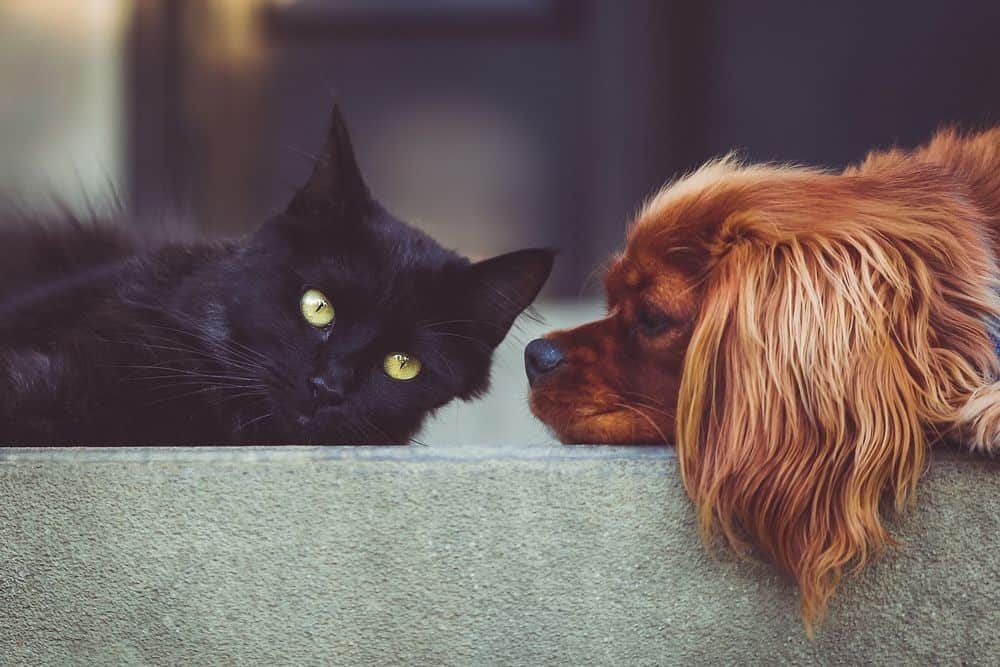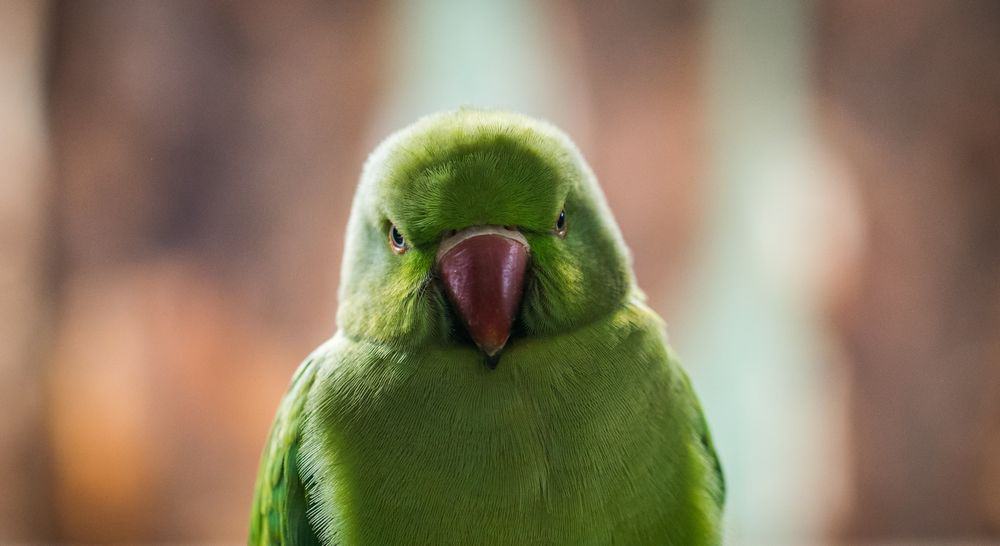 LED grow lights are designed to be as safe as possible.
LED grow lights are designed to be as safe as possible.
Assuming you buy them from a reputable brand, of course.
But that does not mean they pose no danger whatsoever.
That’s why there are so many articles out there about how they can harm our eyes or our skin.
But there are not many articles discussing the danger grow lights may pose to our household pets.
Are LED grow lights safe for pets then, or do they have the potential to cause serious harm to our furry friends?
Keep reading to find out. We will cover everything you need to know about LED grow lights and pets. We will also discuss the safety of other types of grow lights in regards to our pets.
Contents
- 1 Are LED Grow Lights Safe For Pets?
- 2 Are Grow Lights Safe For Pets: Final Thoughts
Are LED Grow Lights Safe For Pets?
Yes, LED grow lights are generally safe for pets,. You don’t have to be overly concerned with issues such as exposure to UV light.
As long as your grow lights are correctly installed and wired and you use them as intended, there should be no extra risk for your pets.
While prolonged exposure to blue light from LEDs can affect sleep patterns in both humans and animals, it is the potential for UV radiation that is most worrying. But most pet cats and dogs are covered with fur and have protection from the effects of UV light.

Their eyes are not protected, of course, but your feline friend or pet pooch is unlikely to stare into the lights anyway. But they do have more sensitive eyes than humans, so it is good to be aware of your light’s flicker rate and how that may affect your pet.
It’s fair to say that LED grow lights are safe for pets. That said, it’s still a good idea to keep your pets out of your grow space, especially if you have an agile and inquisitive pet cat.
First Potential Problem: UV Light
Ultraviolet (UV) light is a kind of electromagnetic radiation. It’s the type of radiation that gives us suntans and sunburn. Overexposure to UV light can damage living tissue, but we also get vitamin D from the sun’s UV radiation. So it’s not entirely bad.
UV light is generally divided into three sub-categories, according to its wavelength (measured in nanometers):
- UVA – 315–400 nm
- UVB – 280–315 nm
- UVC – 180–280 nm
OF these, UVA is the least harmful to us and UVC the most. Luckily , our atmosphere filters out most of the UVC light from the sun. And grow lights do not emit UVC, but they may emit the other two types of UV radiation.
Do LED Grow Lights Emit UV?

While the LED lights used to illuminate your home or office space emit a negligible amount of UV light, LED grow lights are slightly different.
That makes sense, since their applications are slightly different. You’re not providing light to your plants so they can see better. The light is meant to help them grow. This means different output levels and different spectra.
And one major difference is that some LED grow lights include UV diodes. In almost all cases, those diodes are UVA, which are the least harmful. UVA rays are the ones that make us tan. Shorter UVA rays can also cause sunburn, but most burns come from UVB.
UVB diodes are quite expensive to produce, which is why no LED grow lights contain them. The fixtures that do emit LED use a fluorescent tube to add UVB light to their output.
If you are not sure whether your LED grow light emits any UV light, check the manufacturer’s literature and the specs of the individual models for further information and clarification.
And if your LED grow light does emit any type of UV radiation, it is best to cover up in your grow room. Don’t go in there shirtless in the hopes of working on your tan and make sure you wear eye protection.
Yes, grow lights can give you vitamin D, but you need to be careful not to overdo it. So better to just get your vitamin D elsewhere. As for our pets, they are ‘covered-up’ already. Their fur provides them natural protection.
Second Potential Problem: Flicker Rate
The flicker rate is the speed at which the light fluctuates in intensity and unsteadiness. Most lighting flickers at a rate that is imperceptible to the human eye.
But many animals (including cats and dogs) have more rods in their retina than humans do. As a result, they can perceive flicker more easily.
Fluorescent lights flicker at a rate of 50-60 times per second, which is on the threshold for human perception. LED lights, on the other hand, usually flicker at 1,000 to 200,000 times per second, which is beyond human and pet perception.
Due to the incredibly high flicker rate, your LED grow lights should not be irritating for your pets. But it is worth checking the specs, if you have (or are looking to buy) a lower-end model. Some of those may have low flicker rates.
Are Other Grow Lights Safe For Pets?

While LED grow lights have become increasingly popular in more recent times, there are still a few different styles and designs of grow lights available. The main types of lighting used to grow plants includes the following:
- Incandescent
- High-Pressure Sodium (HPS)
- Metal Halide (MH)
- Ceramic Meta Halide (CMH)
- Fluorescent
And the good news is that none of these emit a high enough level of UV light to cause any extra concern. Of those five types, HPS, MH, and CMH grow lights emit the most UV light.
If you use one of those types, you’ll want to protect yourself and your pets, just to be safe. This means cover yourself up and keep your pets out of the grow room. A little bit of exposure won’t matter, but spending a long time under the lights could be harmful.
A sixth type of grow light, Mercury Vapor, is less common than the others. It emits significantly more UV radiation, and is much more likely to cause future health issues. If you use a MV light, take extra precautions. But very few people use them, so you shouldn’t either.
Finally, there are fluorescent bulbs that emit only UV light. Some of these emit specifically UVB light. These bulbs are generally not very powerful, but longer exposure could lead to health issues, so you’ll want to take precautions (cover up and wear eye protection) if you have one of these running.
How To Protect Your Pet From LED Grow Lights
The best way to protect your pets is to grow your cannabis plants in a dedicated grow space and then do your best to keep your inquisitive furry friend out of it.
A more pressing concern than the UV radiation and flicker rate is the fact that your pet could knock your grow lights over. This can potentially injure your pet and damage your grow lights and your precious plants.
In addition to this direct damage, there is also the added fire hazard of an LED grow light being knocked over.
Pets And LED Grow Lights: Additional Questions

Next, we will answer some additional questions related to LED grow lights and pets. If you have any further questions, please feel free to ask them in the comments below.
Do LED grow lights affect your eyes?
Many LED grow lights do emit some amount of UV radiation. Too much exposure to ultraviolet rays can damage parts of the eye. Protecting your eyes with UV-blocking eyewear is a good idea when you’re in your grow space. Apart from that, most grow lights are also quite powerful. As a result, grow lights can damage your eyes if you stare straight into them.
Are red lights bad for animals?
Most dogs and cats seem perfectly happy around red light. The low heat output is comfortable, and their eyes aren’t particularly bothered by the red wavelengths.
Are blue lights bad for animals?
Blue light can alter the behavioural patterns of animals, including humans. It can interfere with circadian rhythms and alter sleep patterns.
Which color LED is best for your plants?
Blue light helps plants produce chlorophyll, which is the pigment they need to grow. It also helps encourage germination and root development in young plants and seedlings. Red light encourages plant growth and helps plants to produce flowers and seeds.
Some cannabis growers like to have blue light during the vegetative stage, and then switch to red light for the all-important flowering stage. However, it is best to provide all wavelengths all the time, with most of the light being in the red wavelengths and the second most being blue.
 This article covers the best color of light for plant growth. Of course, not all plants are the same. Underwater plants, for example, need light with much more blue in it. If you use LED lights for aquarium plants or coral, you’ll want ones that are heavier on blue wavelengths.
This article covers the best color of light for plant growth. Of course, not all plants are the same. Underwater plants, for example, need light with much more blue in it. If you use LED lights for aquarium plants or coral, you’ll want ones that are heavier on blue wavelengths.
Are Grow Lights Safe For Pets: Final Thoughts
LED grow lights are safe for pets. Short exposure times pose no risk and you only need to worry about long exposure times. Even then, your pet is unlikely to suffer any ill effects, but there is the potential for eye damage.
The biggest danger of having your pet run around your grow room is not to your pet, but to your plants. Cats especially, can be quite destructive, without even realizing it.
And the biggest danger to your pet does not come from your lights, but from your pet itself. It could knock over something, including your grow lights, and have it fall on them, causing injury. Not to mention, again, potential damage to your plants and anything else you may have in your grow space.
Leave a Reply